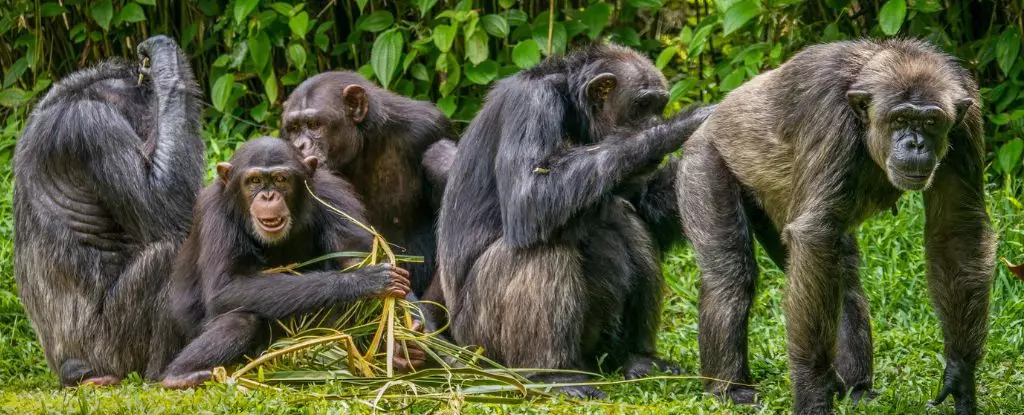Urination, a basic biological function, may seem trivial at first glance, yet recent research reveals it has intriguing social implications among primates, particularly chimpanzees. A groundbreaking study involving 20 captive chimpanzees at the Kumamoto Sanctuary in Japan has discovered evidence that the act of urinating can be socially contagious. This phenomenon raises questions not only about the nature of animal behavior but also about the underlying social structures that govern these interactions. The capacity for synchronized urination among primates suggests a level of social awareness and cohesion that has profound evolutionary implications.
The study meticulously observed 20 chimps over 604 hours, recording their urination patterns. By tracking instances of synchronized urination—those occurring within 60 seconds of one another—researchers aimed to determine the triggers facilitating this behavior. They focused on physical proximity, hypothesizing that closeness might enhance the likelihood of one chimp following another’s lead in urination. This hypothesis was supported; instances of synchronized urination increased significantly when chimps were within three meters of one another, suggesting that social cues play a crucial role in this behavior.
The research delved deeper, exploring the impact of social relationships and hierarchies on urination behavior. Surprisingly, findings indicated that the relationship between grooming and urination was weak; chimps who groomed each other frequently did not necessarily urinate together. Conversely, the alignment of social rank emerged as a significant factor: lower-ranking individuals were more inclined to urinate after observing a higher-ranking member do so. This result opens the door to hypotheses regarding social influence and attention within primate communities, suggesting that dominant individuals may exert a subtly coercive social pressure on their subordinates, even in such a mundane act as urination.
The study’s results draw intriguing parallels with other social behaviors observed in the animal kingdom, such as contagious yawning. This connection raises the question of why these involuntary bodily functions display such parallel social dynamics. Yawning has been linked to social bonding and empathy, and it appears that the act of urinating may serve a similar social function among chimpanzees. The lack of correlation between stronger connections (as measured by grooming) to synchronized urination suggests that social ties do not always dictate behavior; rather, hierarchical systems may influence the way individuals interact even in performing basic bodily functions.
The findings of this study challenge traditional views on bodily functions and their consequences for social interaction. As expressed by Ena Onishi, the lead researcher, the discovery that higher-ranking chimps can influence the behavior of their subordinates enhances our understanding of leadership dynamics within primate groups. Moreover, it highlights a potential mechanism through which community cohesion is maintained, which is crucial in wild environments where social dynamics can dictate survival.
Research on the social dimensions of urination among chimpanzees not only enriches our comprehension of primate behavior but also prompts broader reflections on animal social structures. By recognizing the significance of such seemingly inconspicuous actions, scientists can begin to address the broader ecological and evolutionary implications of social behaviors within primate communities. As further studies unveil the complexities of these interactions, our appreciation for both the mundane and the exceptional aspects of animal life continues to grow. Understanding such behaviors may eventually inform conservation strategies and enhance our efforts to protect these intelligent creatures in the wild.


Leave a Reply